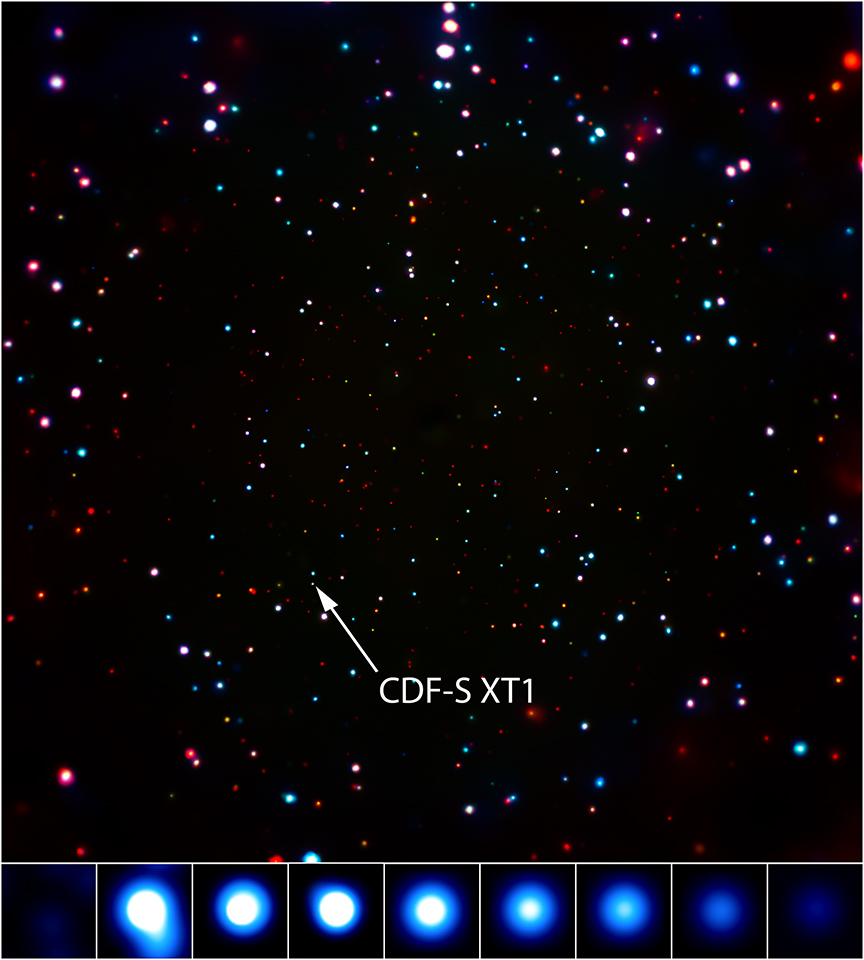Peculiar X-Ray Burst Has Astronomers Stumped

Astronomers spotted a peculiar burst of bright X-rays in a distant area of the universe, and they're not quite sure where it came from.
NASA's Chandra X-ray Observatory detected the outburst, called CDF-S XT1, in a region known as the Chandra Deep Field South in October 2014. Images from the telescope showed that the flash of X-rays became 1,000 times brighter over a few hours before fading dramatically in about a day, according to a statement from the Chandra X-ray Observatory.
"Ever since discovering this source, we've been struggling to understand its origin," Franz Bauer, a researcher at the Pontifical Catholic University of Chile in Santiago, said in the statement. "It's like we have a jigsaw puzzle but we don't have all of the pieces." Bauer is the first author on a new study probing the source. [The X-Ray Universe Revealed in Chandra Images]
While astronomers have yet to determine the exact source of the mysterious event, archived data from NASA's Hubble and Spitzer space telescopes shows that the event likely occurred in a faint, small galaxy about 10.7 billion light-years from Earth, according to the statement.
The new study suggests that the X-rays may be the result of a gamma-ray burst — a powerful but brief explosion triggered by the collapse of a massive star or the collision of two neutron stars — or a white dwarf star being devoured by a medium-size black hole.
However, "none of these ideas fits the data perfectly," study co-author Ezequiel Treister, also of the Pontifical Catholic University, said in the statement. "But then again, we've rarely, if ever, seen any of the proposed possibilities in actual data, so we don't understand them well at all."
Using archived data from the Chandra telescope, the European Space Agency's XMM-Newton space observatory and NASA's Swift satellite, the astronomers hope to uncover other examples of this mysterious event and possibly image the same phenomenon from other objects in future observations.
Get the Space.com Newsletter
Breaking space news, the latest updates on rocket launches, skywatching events and more!
"We may have observed a completely new type of cataclysmic event," study co-author Kevin Schawinski, a professor of astrophysics at the Swiss Federal Institute of Technology in Zurich, said in the statement. "Whatever it is, a lot more observations are needed to work out what we're seeing."
Their findings will be published in the June 2017 issue of the journal Monthly Notices of the Royal Astronomical Society, and they're currently available on ArXiv.org.
Follow Samantha Mathewson @Sam_Ashley13. Follow us @Spacedotcom, Facebook and Google+. Original article on Space.com.
Join our Space Forums to keep talking space on the latest missions, night sky and more! And if you have a news tip, correction or comment, let us know at: community@space.com.

Samantha Mathewson joined Space.com as an intern in the summer of 2016. She received a B.A. in Journalism and Environmental Science at the University of New Haven, in Connecticut. Previously, her work has been published in Nature World News. When not writing or reading about science, Samantha enjoys traveling to new places and taking photos! You can follow her on Twitter @Sam_Ashley13.









